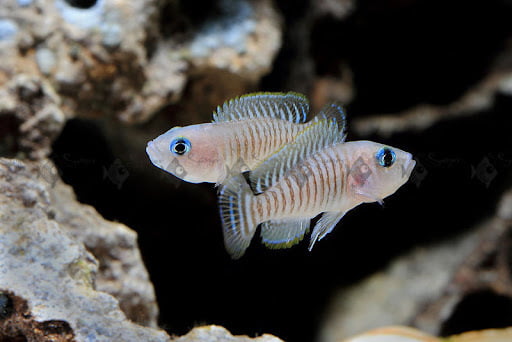
Neolamprologus Multifasciatus
Neolamprologus multifasciatus is a small species of cichlid fish native to Lake Tanganyika in East Africa. These fish are commonly known as Multies or Multifasciatus. Here are some key characteristics and information about them:
Size: Multifasciatus are one of the smallest cichlid species, with adults typically reaching around 1 to 2 inches (2.5 to 5 cm) in length.
Habitat: They are found in the rocky shorelines and shell beds of Lake Tanganyika, where they inhabit the empty shells of snails. The shells serve as both shelter and breeding sites for these fish.
Behavior: Multifasciatus are known for their interesting social structure. They form colonies with a single dominant breeding pair and other subordinate individuals. The subordinates help care for the offspring of the dominant pair.
Tank Setup: In captivity, it's recommended to provide a tank with plenty of shells or caves for hiding and breeding. The substrate should be fine sand to mimic their natural habitat. They prefer a well-oxygenated aquarium with good water quality.
Diet: They are omnivores and feed on a variety of foods, including small invertebrates, zooplankton, and algae. In captivity, they can be fed a diet of high-quality pellets, live or frozen foods, and some vegetable matter.
Breeding: Multifasciatus are prolific breeders. The dominant pair will spawn in a shell, and the female will lay eggs inside. The parents and sometimes the subordinate members of the colony will help guard and care for the fry.
Water Parameters: They prefer alkaline water conditions with a pH between 7.8 and 9.0 and a water temperature ranging from 75°F to 82°F (24°C to 28°C).
Compatibility: While they can be kept in community aquariums, it's important to avoid aggressive or larger tankmates that may intimidate or harm them due to their small size.
Always do thorough research and consider the specific needs of Neolamprologus multifasciatus before setting up an aquarium for them. As with any fish species, proper care and attention to water conditions are crucial for their well-being



